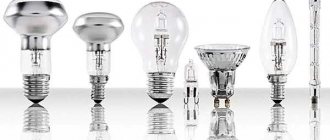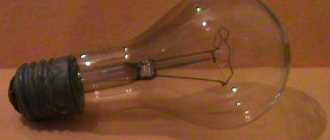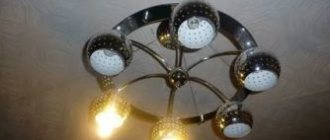Plans and realities
The plan adopted at the congress provided not only for electrification, but also for the development of Russia as a whole.
The leader’s words were the motto: “Communism is Soviet power plus electrification of the entire country.” For all the utopianism of his communist ideas, Lenin perfectly understood the importance of energy for state development
The ambitious Bolshevik plan was successfully implemented and exceeded. New factories were founded, industrial territories were developed (Donbass, Kuzbass), and, of course, a number of new power plants were built, which made it possible to create a kind of energy framework for the USSR. The development of transport and communications received a powerful impetus, and large-scale construction projects arose in a number of regions of the country. It is believed that it was the GOELRO plan that formed the basis for industrialization, which made it possible to bring the country to a fundamentally different level of development. And yet, even in the 80s of the last century in the USSR there were many settlements where the “Ilyich light bulb” was still just a dream.
Why is the light bulb called that?
In order to understand the history of such an extraordinary name for an ordinary lighting device, let's travel to a small village called Kashino, in 1920. Socialism was gaining momentum, and even localities such as Kashino tried to keep up with the overall strategy of economic development. There was no electricity in the village, but enterprising villagers decided to organize a rural power station before V.I. Lenin’s arrival.
No sooner said than done, and by November 14, 1920, when Lenin set foot on the territory of Kashino, the station was ready. It is worth noting that the villagers themselves found the funds to equip the station: the money was allocated from the agricultural partnership, and local residents allocated their own free time for the construction. The dynamo was delivered to the villagers from Moscow. The events in Kashino received wide publicity thanks to the media, and soon information about the electrification of remote villages spread throughout the USSR.
Some time after the visit of the people’s leader, a museum was even organized in Kashino, which, however, was abandoned and plundered in the mid-“wild nineties.” Unfortunately, there were no people willing to revive the cultural heritage of the settlement. However, the memorable event remained “living” in the form of a short story printed on the pages of Soviet children's literature.
Looking at this event now, many see in it exclusively the propaganda sentiments of the authorities of that time. The concept of “Ilyich lamp” even acquired an ironic and negative connotation and began to express a hastily solved problem of lighting in a residential or office space. However, there is some justice in this regard: even by 1980, a huge number of settlements in rural areas were not electrified.
Today, the concept of “Ilyich light bulb” most often means any incandescent lamp hanging freely from the ceiling. It is noteworthy that this concept is used mainly only by residents of the former USSR. To the modern average person, accustomed to an abundance of lighting fixtures of all varieties and colors, such laconicism in lighting may seem trivial. Nevertheless, the device still performs its main function.
Why is Ilyich's light bulb called that?
In many Soviet and post-Soviet newspapers, magazines and literary essays one can find such a phrase as “Ilyich’s light bulb.” Many people mistakenly believe that this expression implies that the inventor of some of his “special” light bulbs is none other than Vladimir Ilyich Lenin. But, naturally, this is not so. Let's look at the history of this expression.
The phrase “Ilyich’s light bulb” came into active use after Lenin visited the village of Kashino in 1920. The trip was timed to coincide with the launch of a local power plant with a distribution network.
The structure was built on the basis of old telegraph wires and was part of a program that promoted the electrification of the entire country.
Since there was no electricity in the village of Kashino, before Lenin’s arrival it was decided to organize a rural power station from what was available. Everything was built hastily so that the first light bulb would light up in one of the local huts before Lenin’s arrival. So initially the concept of “Ilyich’s light bulb” referred to the electrification of the USSR (especially rural areas).
The incident that happened in Kashino spread so quickly in the media and received publicity that the expression “Ilyich’s light bulb” took on a completely different meaning. For the construction of a rural power plant, locals found money on their own (from an agricultural partnership), organized the work themselves, and looked for equipment. After the leader’s visit, they even organized a museum in Kashino, which has now been abandoned for a long time (and no one is in a hurry to restore it). The absurdity of the situation gave the expression “Ilyich’s sweetheart” a negative meaning, as they called the situation of organizing lighting “in a hurry” in a residential or office space.
In the vocabulary of many Soviet citizens, “Ilyich’s lamp” became part of a more comprehensive expression: “There was a smokehouse and a candle - now Ilyich’s lamp.”
For a long time, the saying circulated in many Soviet magazines.
It's funny that the villagers did not have any wall switches at their disposal (after all, electricity was installed in houses for the first time). The only thing that helped control the lighting was a lever on the surface of the socket. The wiring in this case was an ordinary wire with two cores and rubber insulation. This entire structure was attached to the wall using porcelain insulators (they were also popularly called “rollers”). For a modern person, such a design is not of particular interest, but for people who have never seen electric light sources, it was a real miracle.
Nowadays, any incandescent light bulb that hangs from the ceiling is called an “Ilyich light bulb.”
Invention of the incandescent lamp
The first incandescent lamp was invented in Great Britain back in the 19th century, more precisely in 1809. The familiar device with a tungsten filament is the brainchild of Russian electrical engineer Alexander Nikolaevich Lodygin. The first version of the design was patented in 1874 and was immediately recognized in most European countries. For his invention, Lodygin was awarded the prestigious Lomonosov Prize, awarded by the St. Petersburg Academy of Sciences. The scientist has many other useful inventions:
- Electrification of agricultural production - power supply to agricultural enterprises
- induction oven;
- electric heater for heating;
- diving apparatus.
Working to improve the design of an incandescent lamp, Alexander Lodygin was the first to pump air out of glass bulbs and fill the lamp with inert gas, thereby increasing its service life. The lamp's filaments were twisted into a spiral shape, which is still used today.
After the revolution, the talented scientist was unable to find a common language with the new government and was forced to leave Russia, like many bright minds of that time. He continued to work in the United States until his death. When asked to return to his homeland to participate in the development of the GOELRO plan, Lodygin refused.
Who invented Ilyich's light bulb?
Anyone who went to school in the 1960s remembers that the thing about which they said “the pear is hanging - you can’t eat it” was called “Ilyich’s light bulb.” All this stemmed from Lenin’s GOELRO plan and the subsequent electrification of the entire country. But it turns out that this particular light bulb was invented much earlier and the light penetrated into our homes already in the middle of the 19th century.
In general, the first incandescent light bulb was invented in England in 1809, but the light bulb with a modern tungsten filament was created by our engineer, inventor Alexander Lodygin. He approved his patent in 1874, and it was immediately recognized in almost all European countries: Austria-Hungary, Spain, Portugal, Italy, Belgium, France, Great Britain, Sweden, Saxony.
What would we do today without the light bulb? Splinters, candles, and kerosene lamps did not expand the range of human activity, but Lodygin’s invention literally illuminated our path to the future. It is not for nothing that he received the prestigious Lomonosov Prize for his invention.
In addition, Alexander Lodygin was the first engineer to propose a project for electrification of the entire country. But the outbreak of the First World War and the subsequent Revolution of 1917 put an end to all his electrical innovations. He goes abroad and dies in New York in 1923. And since then the name “Ilyich’s light bulb” has finally been assigned to the invention.
histrf.ru
Plans and realities
The plan adopted at the congress provided not only for electrification, but also for the development of Russia as a whole. The leader’s words were the motto: “Communism is Soviet power plus electrification of the entire country.”
For all the utopianism of his communist ideas, Lenin perfectly understood the importance of energy for state development
The ambitious Bolshevik plan was successfully implemented and exceeded. New factories were founded, industrial territories were developed (Donbass, Kuzbass), and, of course, a number of new power plants were built, which made it possible to create a kind of energy framework for the USSR. The development of transport and communications received a powerful impetus, and large-scale construction projects arose in a number of regions of the country. It is believed that it was the GOELRO plan that formed the basis for industrialization, which made it possible to bring the country to a fundamentally different level of development. And yet, even in the 80s of the last century in the USSR there were many settlements where the “Ilyich light bulb” was still just a dream.
Who invented the Ilyich light bulb
Ilyich's light bulb
We have all heard the name Ilyich's light bulb. But did Vladimir Ilyich Lenin really invent this light bulb? Of course not.
It was named in honor of the great revolutionary for the reason that under Lenin, power lines began to be laid throughout the country. And then such light bulbs appeared in peasants' houses.
Characteristics and advantages of filament LED lamps
Today it is difficult to imagine human life without electricity. And when the lights are turned off for a while, many people begin to panic, and everything around them seems to stop - electrical appliances do not work, there is no Internet, there is no heat, the lamps do not shine.
They say that the world's first light bulb appeared many thousands of years ago. The ancient Egyptians used special vessels to illuminate their homes; they were made of clay, with wicks made of cotton fabric built into them. Residents of the Caspian coast also used similar lamps, only they used oil instead of olive oil.
Centuries later, in the Middle Ages, the first wax candle was invented. It was made from beeswax and was available to almost all residents. Many scientists also contributed their piece of knowledge to the development of the light bulb, for example, Leonardo da Vinci tried to invent the kerosene lamp.
But despite all the efforts and efforts, the first light bulb that even slightly resembled a modern one and was safer appeared in the 19th century. And after another quarter of a century, the first electric light bulb appeared.
And today, there is a debate about who invented the first modern light bulb?
They say that the first was our compatriot Pavel Nikolaevich Yablochkov. His hands invented not only the light bulb, but also the electric candle. Candles were used to illuminate streets at night, although they had to be changed every hour and a half. Candles began to be widely used among the people; they illuminated houses, streets, shops, and such lighting was used in theaters.
Around 1872, the Russian engineer-inventor Alexander Nikolaevich Lodygin discovered or actually invented the first electric light bulb. Such a light bulb could burn for about half an hour. Later, by pumping the air out of it, the life of the light bulb increased.
In parallel with Lodygin, the American scientist Thomas Edison began using bamboo carbon filament in 1879, and his lamp burned for hundreds of thousands of hours. Also, the English inventor Joseph Swan in 1878 invented a light bulb in the shape of a glass bulb. Two scientists molded their two inventions into one and began producing the first light bulbs.
Harm and benefits of energy-saving fluorescent lamps
The device of Ilyich's light bulb
The classic incandescent lamp is a glass bulb with a tungsten filament placed in it in the form of a thin spiral. The thread is fixed on special horns. The current passing through it strongly heats the tungsten, and the metal begins to glow. In the immediate vicinity of the light bulb, you can also feel weak thermal radiation.
The lamp socket hung freely from the ceiling and was not equipped with a shade or shade. The switch was located on the cartridge body, the wiring was a twisted two-core cable in rubber insulation and braided with threads.
About incandescent lamps
Remember the children's riddle about the pear that you can't eat? So this is about her, about an ordinary incandescent lamp, which is also often named after V.I. Lenin. Who invented the Ilyich light bulb? Well, certainly not the leader of the world proletariat! Although incandescent lamps are almost one and a half hundred years old, the question about their inventor is not so easy to answer.
The operating principle of an incandescent lamp is as follows. There is a glass bulb containing a wire emitter (usually tungsten). Current flows through the wire, it becomes heated, and electrical energy is converted into light. Let there be light!
Since the mid-19th century, work on creating such a device has been carried out all over the world, including in Russia. Scientists in many countries, experimenting with materials and spiral shapes, created lamps that were, to varying degrees, close to the one that is familiar to modern consumers. At the same time, inventions were usually patented, and there were probably a dozen authors of such patents. Who should be considered the real author? In the West, the American Edison is most often called the inventor of the incandescent lamp.
In Russia, the names of Lodygin and Yablochkov are remembered, considering them to be the authors of such an important invention for everyone. By the way, we started talking about Lodygin not so long ago: in the USSR they preferred not to remember this surname
Indeed, the most talented electrical engineer did not accept the revolution of 1917 and emigrated to the USA, where he died in 1923. But what does Lenin have to do with all these learned tales?
Ilyich's light bulb: they were and were not
This almost forgotten phrase is now heard again. Many people are interested in this name and ask about who invented the Ilyich light bulb? Let's try to figure it out.
About incandescent lamps
Remember the children's riddle about the pear that you can't eat? So this is about her, about an ordinary incandescent lamp, which is also often named after V.I. Lenin. Who invented the Ilyich light bulb? Well, certainly not the leader of the world proletariat! Although incandescent lamps are almost one and a half hundred years old, the question about their inventor is not so easy to answer.
The operating principle of an incandescent lamp is as follows. There is a glass bulb containing a wire emitter (usually tungsten). Current flows through the wire, it becomes heated, and electrical energy is converted into light. Let there be light!
Since the mid-19th century, work on creating such a device has been carried out all over the world, including in Russia. Scientists in many countries, experimenting with materials and spiral shapes, created lamps that were, to varying degrees, close to the one that is familiar to modern consumers. At the same time, inventions were usually patented, and there were probably a dozen authors of such patents.
Who should be considered the real author? In the West, the American Edison is most often called the inventor of the incandescent lamp. In Russia, the names of Lodygin and Yablochkov are remembered, considering them to be the authors of such an important invention for everyone. By the way, we started talking about Lodygin not so long ago: in the USSR they preferred not to remember this surname.
Indeed, the most talented electrical engineer did not accept the revolution of 1917 and emigrated to the USA, where he died in 1923. But what does Lenin have to do with all these learned tales?
About the village of Kashino
This name is rather pathetic, propaganda - Ilyich’s light bulb. Photos still preserved in old archives help to recreate the typical village atmosphere of the 20s of the last century. A remote Russian village, dirt, darkness, backwardness - and suddenly the lights come on in the huts. It doesn’t matter that the lamp without a lampshade hangs shabbyly from the ceiling and barely smolders. All the same, this is a huge blessing, this is hope for progress, for the best. How can one not perpetuate the name of the one to whom the people owe their introduction to civilization?
The mention of Lenin’s personality in the name of the lighting device arose after the leader’s trip to the village of Kashino in 1920 to open a local power plant. The villagers, previously inspired by his fiery speech at the Komsomol congress, decided to electrify the village at their own expense. No sooner said than done! Using unused telegraph wires and a dynamo brought from Moscow, a local power grid was built by the residents themselves.
And then the leader’s arrival in Kashino, his conversations with the peasants, and his speech at the rally were widely covered in the Soviet press. A lot of propaganda has passed and it has firmly entered the vocabulary of Soviet people.
What is GOELRO?
In the first post-revolutionary years, the electrical topic was perhaps the highest priority. At the beginning of 1920, a state commission for the electrification of Russia - GOELRO - was created, designed to solve the problem. Later they started talking about the GOELRO plan, which provided not only for the electrification of the country, but also for the development of its economy as a whole. “Ilyich’s light bulb” is a unique symbol of this plan.
There are many blank spots in the history of both the idea itself and its implementation. According to some information, plans for large-scale electrification of the country were considered back in tsarist times, and only the high costs and difficulties of the First World War (1914-1918) did not allow them to come to fruition. The country was able to truly begin to solve the problem only in December 1920, after the GOELRO plan was approved at the 9th All-Russian Congress of Soviets.
Plans and realities
The plan adopted at the congress provided not only for electrification, but also for the development of Russia as a whole. The motto was the words of the leader: “Communism is Soviet power plus electrification of the entire country.” For all the utopianism of his communist ideas, Lenin perfectly understood the importance of energy for state development.
Advantages and disadvantages.
The incandescent lamp has more advantages than disadvantages.
pros
- Low price of lighting fixture. They don't make it cheaper yet.
- Small size, ergonomic shape.
- Low sensitivity to voltage changes.
- Instant glow when plugged in.
- Not harmful to the eyes: flicker is not detected by the human eye.
- Possibility of using dimers - brightness controllers.
- The light spectrum is as close as possible to natural sunlight.
- The glow does not distort the colors of objects.
- Constant emission spectrum.
- Reliability when operating in conditions different from normal: low or high temperatures, condensation in the atmosphere.
- Widest operating voltage range.
- Easy and safe disposal.
- Simplicity of the electrical circuit. The lamp is connected directly to the network without additional control devices.
- Resistance to ionizing radiation and electromagnetic pulses.
- Does not interfere with radio frequencies.
- Doesn't buzz when working.
- Can operate on both AC and DC current; does not depend on polarity.
- Low level of ultraviolet radiation.
Minuses
- Short service life.
- Low luminous efficiency, which depends on voltage.
- Low efficiency: no more than 5%.
- Fire hazard due to strong thermal heating of the flask.
- The fragility of the glass flask.
- Possibility of flask explosion.
- High energy consumption compared to other types of lamps.
What is GOELRO?
In the first post-revolutionary years, the electrical topic was perhaps the highest priority. At the beginning of 1920, a state commission for the electrification of Russia - GOELRO - was created, designed to solve the problem. Later they started talking about the GOELRO plan, which provided not only for the electrification of the country, but also for the development of its economy as a whole. “Ilyich’s light bulb” is a unique symbol of this plan.
There are many blank spots in the history of both the idea itself and its implementation. According to some information, plans for large-scale electrification of the country were considered back in tsarist times, and only the high costs and difficulties of the First World War (1914-1918) did not allow them to come to fruition. The country was able to truly begin to solve the problem only in December 1920, after the GOELRO plan was approved at the 9th All-Russian Congress of Soviets.
Do you have a plan, Comrade Krzhizhanovsky?
But the Bolsheviks began discussing electrification plans almost immediately after coming to power, in November 1917. At the end of that year, Lenin, along with his close friend and comrade, energy engineer Gleb Krzhizhanovsky, met with leading Russian scientists in the field of energy, discussing plans for future work.
The civil war, during which the country's electricity production fell fivefold, made energy development plans more important than ever for the Bolsheviks. At the end of 1919, Krzhizhanovsky, after a conversation with Lenin, sat down to write the work “The Main Tasks of the Electrification of Russia.” On February 21, 1920, Lenin signed a decree on the creation of the State Commission for Electrification of Russia (GOELRO), the head of which was Gleb Krzhizhanovsky. About 200 of the best specialists were recruited to work on the commission, many of whom, to put it mildly, did not like the Bolsheviks. However, it turned out that it was Lenin’s team that allowed these people to realize their ideas.
The 650-page strategic plan for the electrification of Russia was presented at the VIII All-Russian Congress of Soviets in December 1920. It was a huge presentation that shocked the delegates. Needless to say, the plan was unconditionally approved.
Article on the topic
"He sees the world of the future." How Lenin turned out to be more far-sighted than H.G. Wells
Why are they called Ilyich lamps?
The name Ilyich lamp was assigned to this household lighting device in our country. Not every lamp is worthy of such a name. Only a bare light bulb on a wire without a shade can be named after Lenin. The fact is that one of the first tasks of the young Soviet government was the electrification of the country. In 1920, Vladimir Ilyich Lenin came to the village of Kashino to launch a power plant. There he talked with the peasants, took photographs with them and held a rally. This seemingly ordinary event was reflected in Soviet literature and cinema. And a simple lamp hanging on a wire from the ceiling began to be called Ilyich’s lamp. Later, this term acquired an ironic connotation, as an example of a problem solved in a hurry.
Results.
Incandescent lamps served people faithfully throughout the 20th century. In the current century, LED and fluorescent lighting devices are replacing them. In our country, as part of the fight for energy efficiency, programs have been adopted that stimulate the development of the production of more modern light sources. Many Russians have already stopped using incandescent lamps in their apartments. However, some of their advantages are unique. For example, high color rendering is indispensable for photo and film production. Many special lighting devices still work only using old technology. Some people simply take care of their eyes and use Ilyich’s lamp. And for rooms with short-term light switching on once a week, an incandescent lamp is the most economically feasible option. The choice remains with the individual consumer!
- Related Posts
- Decorative lighting at home: variety of ideas
- Device and connection diagram of the DRV 250 lamp
- How to properly use emergency lighting with all current standards and requirements
Launch of a power plant in the village of Kashino near Moscow
The incandescent lamp began to be called “Ilyich’s light bulb” after Lenin and Krupskaya’s trip to the village of Kashino, Moscow region. The leader of the world proletariat was present at the launch of one of the first power plants with a distribution network made from an old telegraph wire.
The station was built using the agricultural partnership's own funds. The villagers were inspired by the ideas of Vladimir Ilyich, in which he called for the economic development of the country through the use of electricity. Lenin was invited to the opening of the power plant, where he held a rally and talked with the local population. The residents of Kashin unanimously spoke out about the benefits of the station and the changes that will occur after its commissioning. The photograph taken that day in Kashino was carefully kept in every family.
So, on November 14, 1920, the first light bulb lit up in a village hut near Moscow. From that moment on, the implementation of the country's electrification plan began, which was based on numerous developments and research by Gleb Maximilianovich Krzhizhanovsky. On December 22, 1920, the GOELRO plan was adopted and a year later approved by the Council of People's Commissars. For the Bolsheviks, the need to build a network of large regional power plants based on local hydropower and fuel capabilities became obvious.
Ilyich's Light Bulb is... What is Ilyich's Light Bulb?
- Ilyich's light bulb - 1. Publ. Outdated Pathet. About the first electric light bulbs in the houses of peasants and collective farmers. Kupina, 117. 2. Zharg. they say Joking. Male genital organ. Elistratov 1994, 663; GEST 1, 141 ... Large dictionary of Russian sayings
- light bulb - and, f. lampe f. 1. A glass container with a hot filament emitting light. BAS 1. The light is on, it’s not hot, Mil left, but I’m sorry. 19144. Eleonskaya 9. Here, he makes cars and little baby bumps. Here, these radiums. I. Shmelev Nanny from Moscow. // Moscow... ... Historical Dictionary of Gallicisms of the Russian Language
- LIGHT BULB - Ilyich. 1. Publ. Outdated Pathet. About the first electric light bulbs in the houses of peasants and collective farmers. Kupina, 117. 2. Zharg. they say Joking. Male genital organ. Elistratov 1994, 663; GESTURE 1, 141. Nazarbayev’s light bulb. Jarg. they say Joking. iron. Kerosene... ... Large dictionary of Russian sayings
- LIGHT BULB - LIGHT BULB, light bulbs, female. 1. decrease to the lamp. Night light. 2. Same as a light bulb (see below; colloquial). ❖ An electric light bulb is a hermetically sealed pear-shaped glass vessel used for lighting with electricity.… … Ushakov’s Explanatory Dictionary
- Light bulb - Incandescent lamp. 230 V, 60 W, 720 lm, base E27, Height approximately 110 mm Incandescent lamp lighting fixture, artificial light source. Light is emitted by a heated metal coil when electric current flows through it.... ... Wikipedia
- light bulb - , and, g. Mind. caress.. Ilyich's light bulb. See lamp... Explanatory dictionary of the language of the Council of Deputies
- Ilyich's lamp - See Ilyich's lamp (LAMP) ... Large dictionary of Russian sayings
- Light bulb - Incandescent lamp. 230 V, 60 W, 720 lm, base E27, Height approximately 110 mm Incandescent lamp lighting fixture, artificial light source. Light is emitted by a heated metal coil when electric current flows through it.... ... Wikipedia
- Pear Ilyich - Zharg. they say Joking. Electric lamp. (Recorded 2002). /em> From the riddle Hanging pear cannot be eaten (light bulb) ... Large dictionary of Russian sayings
- lamp - , s, w. ** Lamp (light bulb) of Ilyich. Pathet. About the first electric light bulbs in the houses of peasants and collective farmers. ◘ In Ukraine, in tens of thousands of collective farm huts, Ilyich’s light bulbs burn brightly and unquenchably (Izv.). BAS, vol. 6, 51. Ilyich’s light bulb (Name... ... Explanatory dictionary of the language of the Council of Deputies
What is the “Ilyich light bulb”
In fact, Vladimir Ilyich, although he was a major political figure and had certain knowledge in various fields of science, never invented his own light bulb. Since the times of the USSR, “Ilyich’s light bulb” has been a name given to a standard incandescent lamp used without a lampshade, lampshade or other “bourgeois excesses”. Such a lamp is designed to fulfill its main purpose - to shine.
Reference. As we remember from the school physics course, the principle of operation of an incandescent lamp is very simple: an electric current passes through a tungsten filament placed on special “horns”, the tungsten becomes very hot and gives off a glow. The entire process takes place in a vacuum. At the same time, even light thermal radiation can be felt from the incandescent element.
Why is Ilyich's light bulb called that?
The phrase “Ilyich’s Light Bulb” appeared after V.I. Lenin’s trip to the village of Kashino in 1920 on the occasion of the launch of a local “power station” with a distribution network made from old telegraph wires. Initially, the concept of “Ilyich’s light bulb” referred to the electrification of Russia, especially rural areas.
V.I. Lenin’s trip to Kashino took place on November 14, 1920 and was timed to coincide with the holiday in honor of the opening of the power plant. The construction of a local power plant and distribution network was inspired by V.I. Lenin’s speech at the 20th Komsomol Congress, where he pointed out the need to develop an economy based on electricity.
The distribution network was built at the expense of the agricultural partnership by the residents themselves in their personal time from a telegraph wire that had not been used for a long time. The dynamo was made in Moscow. In one of the houses, Vladimir Ilyich had a conversation with local peasants. After the conversation, V.I. Lenin and N.K. Krupskaya took pictures with the peasants, and then he spoke at the rally.
This trip had a great influence on Soviet culture. Subsequently, a story for children was written about this event, and a museum was founded in Kashino, although in the 1990s the museum collapsed and was plundered. There are no enthusiasts left who are eager to revive the museum and the first power plant (where the only exhibits are an oil engine and a generator: everything else has been stolen). All the witnesses to the meeting with Lenin died long ago, and their descendants dispersed to different cities and villages.
After the publication of the textbook photograph, which was used as propaganda for the achievements of the Soviet regime, the concept of “Ilyich’s light bulb” began to acquire a negative and ironic connotation, especially due to the fact that even in the 1980s, many settlements in rural areas were not electrified. Also, the name “Ilyich’s light bulb” extended to all examples of hastily solved lighting problems in warehouse, production, etc. premises.
The classic “Ilyich light bulb” is a household incandescent lamp, the socket of which is suspended from the ceiling by a wire (and hangs freely). The lampshade is missing. Often the light bulb's power (or supplied voltage) is too low for “normal” lighting.
We have all heard the name Ilyich's light bulb
. But did Vladimir Ilyich Lenin really invent this light bulb? Of course not.
It was named in honor of the great revolutionary for the reason that under Lenin, power lines began to be laid throughout the country. And then such light bulbs appeared in peasants' houses.
Today it is difficult to imagine human life without electricity. And when the lights are turned off for a while, many people begin to panic, and everything around them seems to stop - electrical appliances do not work, there is no Internet, there is no heat, the lamps do not shine.
They say that the world's first light bulb appeared many thousands of years ago. The ancient Egyptians used special vessels to illuminate their homes; they were made of clay, with wicks made of cotton fabric built into them. Residents of the Caspian coast also used similar lamps, only they used oil instead of olive oil.
Centuries later, in the Middle Ages, the first wax candle was invented. It was made from beeswax and was available to almost all residents. Many scientists also contributed their piece of knowledge to the development of the light bulb, for example, Leonardo da Vinci tried to invent the kerosene lamp.
But despite all the efforts and efforts, the first light bulb that even slightly resembled a modern one and was safer appeared in the 19th century. And after another quarter of a century, the first electric light bulb appeared.
And today, there is a debate about who invented the first modern light bulb?
They say that the first was our compatriot Pavel Nikolaevich Yablochkov. His hands invented not only the light bulb, but also the electric candle. Candles were used to illuminate streets at night, although they had to be changed every hour and a half. Candles began to be widely used among the people; they illuminated houses, streets, shops, and such lighting was used in theaters.
Around 1872, the Russian engineer-inventor Alexander Nikolaevich Lodygin discovered or actually invented the first electric light bulb. Such a light bulb could burn for about half an hour. Later, by pumping the air out of it, the life of the light bulb increased.
In parallel with Lodygin, the American scientist Thomas Edison began using bamboo carbon filament in 1879, and his lamp burned for hundreds of thousands of hours. Also, the English inventor Joseph Swan in 1878 invented a light bulb in the shape of a glass bulb. Two scientists molded their two inventions into one and began producing the first light bulbs.
Who is the real creator of the “Ilyich light bulb”?
It so happened historically that our country, rich in timber, coal and oil, did not need electricity for a long time (compared to Europe and the USA) immediately after its invention. Russia's vast water resources were not in demand for electricity generation. But this did not mean at all that the scientific thought of Russia, working on the problems of obtaining electricity, stood still. Even under the tsarist government, our prominent scientist V.I. Vernadsky developed the idea of creating powerful dams and huge reservoirs. However, this idea, like many things in Russia, has been waiting for some time to be put into practice.
For the first time, the Bolsheviks, led by V.I. Lenin, took Vernadsky’s plan seriously, who formulated a primitive formula for building communism. “Communism is Soviet power plus electrification of the entire country,” said Ilyich. And if you follow this formula, several generations of citizens of the Soviet country still built such communism! Everything would have been fine if the Bolsheviks had not stolen the idea of electrifying the USSR from a world-famous Russian scientist. After all, taking his idea as the basis for the practical side of communism, they crossed out his name from the list of developers, formed a special commission for its implementation headed by Comrade Krzhizhanovsky and passed off the GOELRO Plan only as their Soviet brainchild!
V. I. Vernadsky ru.wikipedia.orgThus, V.I. Vernadsky’s light bulb turned into “Ilyich’s light bulb,” and the scientist himself was forced not only to remain silent about his invention, but also, out of natural decency, to resign from all scientific leadership positions at the university, so as not to participate in the “purges” of scientists and teaching staff teams.
Meanwhile, the GOELRO Plan was enthusiastically exceeded by Soviet citizens already in 1935, and in 1947 the USSR took first place in Europe and second place in the world (compared to the USA) in electricity production.
There is another Russian scientist who is directly related to the development of the idea of electric lighting - the Russian inventor P. N. Yablochkov, who not only developed an arc lamp, but was the first in the world to create a system for crushing electric light. Yablochkov’s name nevertheless went down in the history of science as the creator of the “Yablochkov candle,” but in Vernadsky’s scientific biography his idea of using water energy to generate electric current is still missing. It's time to restore historical justice!
P. N. Yablochkov ru.wikipedia.org
Thanks to V.I. Vernadsky’s plan, the world’s largest thermal power plants appeared in the USSR, and electric lights came on in the houses and apartments of ordinary people.
Historical reference:
- The first power plant in Russia was created and began operating long before the October Revolution of 1917. Namely: it was launched under the tsarist government on November 9, 1885. The electricity from this power plant was supplied to the Winter Palace, where, according to the decree of Nicholas II, balls were to be held only under electric lighting. Only Russian equipment was installed at this power plant.
- Many Russian merchant houses were also illuminated with electricity already in the early 1870s.
- Starting in the 80s of the 19th century, electric lamps began to illuminate the bridges and streets of Moscow.
- And by 1913, the Russian Empire occupied a leading position in the world in generating its own electricity.
Tags: scientists, Russian Empire, electricity, interesting fact, history, inventions, electrification
“Communism is Soviet power plus electrification of the entire country”
In the fall of 1920, Soviet Russia was just beginning to lead a peaceful life. During the years of the Civil War, the population, mostly peasants, suffered devastation, hunger and poverty. It would seem that the time for daring achievements is not the best, but it was during this period that a plan for universal electrification was being actively developed.
On December 22, 1920, the well-known GOELRO plan was adopted (and a year later approved by the Council of People's Commissars), which was based on many years of research and development by G.M. Krzhizhanovsky. He was able to justify the importance of building powerful regional power plants based on local fuel and hydropower resources, as well as the need to combine them into large electric power systems.
IN AND. Lenin at the GOELRO map. Artist L.A. Shmatko. 1957
The implementation of this plan was initially allotted 10-15 years, which looked completely incredible. The English science fiction writer Herbert Wells, who was in Soviet Russia, flatly refused to believe the Kremlin dreamer” V.I. Lenin, although he was offered to see with his own eyes the reality of the plan. While the writer was creating his work “Russia in the Dark,” the GOELRO plan gradually moved from the category of incredible dreams to a practical plane. By 1935, instead of the thirty proposed power plants, forty had been built, and the Soviet Union took first place in Europe in terms of industrial production.
The symbol of triumph in the field of electrification was a simple incandescent lamp without a shade, the socket of which was suspended from the ceiling by a wire and hung freely. The lamp was invented even before the October Revolution, but it went down in history as the “Ilyich lamp,” which Soviet newspapers loved to write about in the 1920s.
Soviet stamp issued for the fortieth anniversary of the GOELRO plan
Formula for finding density
Density (density of a homogeneous body or average density of a non-uniform one) is found by the formula:
ρ=mV,{\displaystyle \rho ={\frac {m}{V}},}
where m
— body weight,
V
— its volume; the formula is simply a mathematical notation of the definition of the term "density" given above.
When calculating the density of gases under normal conditions, this formula can also be written in the form:
ρ=MVm,{\displaystyle \rho ={\frac {M}{V_{m}}},} where
M
is the molar mass of the gas, Vm{\displaystyle V_{m}} is the molar volume (under normal conditions it is approximately equal to 22.4 l/mol).
The body density at a point is written as
ρ=dmdV,{\displaystyle \rho ={\frac {dm}{dV}},}
then the mass of an inhomogeneous body (a body with a density depending on the coordinates) is calculated as
m=∫ρ(r)d3r=∫ρ(r)dV=∫dm.{\displaystyle m=\int \rho (\mathbf {r} )d^{3}\mathbf {r} =\int \rho (\mathbf {r} )dV=\int dm.}
[edit] Links
Meta
Vladimir Ilyich Lenin • Marxism-Leninism Biography
Lenin's return to Russia • Nikolai Nikolaevich Lenin • Trip to Kashino Creativity and expressions
Anecdotes about Lenin • Archival • The upper classes cannot, the lower classes do not want • The impending catastrophe and how to deal with it • Ilyich's light bulb • The Party and Lenin are twin brothers • Stories about Lenin (Zoshchenko) • The revolutionary situation • The mind, honor and conscience of our era Miscellaneous
Lenin and the log • Lenin and children • Lenin and the Jews • Lenin and Kuchuk-Adam • Lenin on Mars • Alexander Blank • Fanny Kaplan Anti-Leninism
Explosion of the monument to Lenin • Demolition of monuments in Ukraine Creativity about Lenin
Lenin in the ring of fire In honor of Lenin Lenzh
| Incandescent | Incandescent lamp • Halogen lamp |
| Fluorescent | Fluorescent lamp (compact fluorescent lamp) • Cathodoluminescent lamp • Induction lamp • Mercury lamp • Black light lamp |
| Gas discharge | High Intensity Lamps • Neon Lamp • Sodium Discharge Lamp • Xenon Flash Lamp • HID Lamps • Electrodeless Lamp • Plasma Lamp • External Electrode Plasma Lamp |
| Electric arc | Carbon arc lamp • Xenon arc lamp • Yablochkov candle • Metal halide lamp |
| On combustion | Torch • Torch • Candle • Oil lamp • Gas lamp • Acetylene lamp • Kerosene lamp • Heat grid • Drummond light |
| Semiconductor | LEDs (LED lamp • organic LED) |
| Others | Sulfur lamp • Chemical light source |
| Types of luminescence | Electroluminescence • Chemiluminescence • Bioluminescence • Radioluminescence • Sonoluminescence • Thermoluminescence • Photoluminescence (fluorescence • phosphorescence) • Triboluminescence • Candoluminescence • Cherenkov radiation |
| Lighting design | Spotlight • Chandelier • Floor lamp • Sconce • Ilyich bulb • Lantern (street • pocket) • Explosion-proof lamp • Plasma lamp • Electroluminescent wire • Lava lamp • Optical fiber |
History of phraseology
Propaganda in the USSR has always been one of the significant levers for controlling the consciousness of the people. She also touched upon the problem of electrification of the country. The cliché “Ilyich’s light bulb” has become firmly entrenched in the minds of Soviet citizens. In printed publications, for example, in a collection of proverbs of the Soviet people, there is the following expression: “There was a smokehouse and a candle - now Ilyich’s lamp.”
Over time, all household incandescent lamps without any decorative elements that serve only an aesthetic purpose began to be called “Ilyich’s light bulb.” This phrase is still used today, but no longer as an achievement of the Soviet economy, but rather, on the contrary, as a very primitive means of illumination.
Choose an answer
[edit] General information
Ilyich's light bulb is a mental cliché of official USSR propaganda. Thus, in the collections of “proverbs of the Soviet people” published in Soviet times, the following phrase was cited, contrasting the pre-revolutionary and Soviet periods: “There was a smokehouse and a candle - now Ilyich’s lamp”[3]. Psychiatrist V.I. Litvinenko notes the connection of this cliche with the genesis of the stable expression “I don’t care,” which indicates the corresponding attitude of the youth of that time to official propaganda [4].
The phrase appeared after V.I. Lenin’s trip to the village of Kashino in 1920 on the occasion of the launch of a local power plant with a distribution network made from old telegraph wires. Initially, the concept of “Ilyich’s light bulb” referred to the electrification of Russia (see GOELRO), especially in rural areas[5].
The classic “Ilyich light bulb” is a household incandescent lamp, the socket of which is suspended from the ceiling by a wire (and hangs freely). The lampshade is missing.











